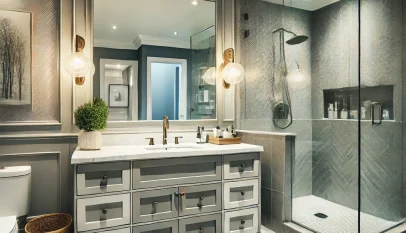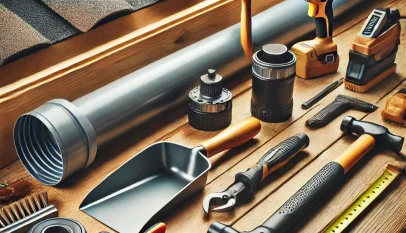
Bathroom renovations in Hamilton can significantly enhance both the functionality and aesthetics of a home. Investing in a thoughtful redesign can elevate comfort and increase property value, making it a wise choice for homeowners. Whether it’s updating fixtures, optimizing space, or incorporating modern technology, homeowners can achieve a personalized bathroom that meets their specific needs.
In Hamilton, various professionals are available to guide homeowners through the renovation process. From initial planning to execution, these experts can help create a plan that aligns with both budget and vision. Understanding the local market trends can also provide valuable insights into popular styles and materials that resonate with prospective buyers.
Renovating a bathroom goes beyond mere appearance; it can transform the everyday experience of using the space. With careful consideration of design elements and functionality, homeowners can achieve a practical and inviting atmosphere that reflects their personal style.
Planning Your Bathroom Renovation
Successful bathroom renovation Hamilton requires careful planning. Key aspects include budget setting, design choices, and contractor selection. Each element plays a vital role in achieving a satisfying result.
Setting a Budget
Determining a budget is the first step in the renovation process. Homeowners should assess their financial situation and establish a clear limit for spending. This includes not only construction costs but also materials, fixtures, and labor.
It’s beneficial to allocate an emergency fund of about 10-20% of the total budget for unexpected expenses.
Example Budget Breakdown:
| Item | Estimated Cost |
| Labor | $3,000 – $10,000 |
| Materials | $1,500 – $5,000 |
| Fixtures | $500 – $2,000 |
| Plumbing & Electrical | $1,000 – $3,000 |
Staying within budget helps avoid financial strain and allows homeowners to focus on their design choices without added stress.
Design Ideas and Inspirations
Exploring design ideas is essential to create a functional and appealing bathroom. Homeowners can find inspiration through various sources like magazines, online platforms, and showrooms.
Considering trends such as minimalist designs, vintage styles, or smart technology can guide decisions. Important elements to think about include:
- Color Schemes: Neutral tones create a relaxing atmosphere.
- Lighting: Layered lighting can enhance functionality.
- Storage Solutions: Built-in shelves optimize space.
Visualizing the design with sketches or 3D modeling tools aids in decision-making. Visiting local home improvement stores can also help in selecting materials and finishes that align with the desired theme.
Choosing a Contractor
Selecting the right contractor is crucial for a smooth renovation experience. Homeowners should research and interview multiple candidates to find a skilled professional.
Key factors include:
- Experience: Look for contractors who specialize in bathroom renovations.
- Reviews: Check online ratings and client testimonials.
- Licensing and Insurance: Ensure the contractor has the necessary credentials to protect against liabilities.
Requesting detailed quotes from potential contractors can clarify what services are included. This helps ensure that the chosen contractor aligns with the project’s scope and budget.
Executing the Renovation
This phase of renovation involves several key steps that are critical to achieving a successful transformation. Each stage requires attention to detail and adherence to safety standards.
Demolition and Removal
Before any new installations can occur, the existing bathroom must be cleared out. This involves removing old fixtures, tiles, and any cabinetry.
- Preparation: Protect surrounding areas with drop cloths and plastic sheeting to prevent dust and debris from spreading.
- Tools: Necessary tools include a pry bar, a sledgehammer, and a reciprocating saw for effective demolition.
- Disposal: Ensure all materials are disposed of properly. It may be beneficial to rent a dumpster for larger renovations.
Care should be taken to observe plumbing and electrical setups to avoid unnecessary damage.
Plumbing and Electrical Work
Once the space is cleared, plumbing and electrical updates may be necessary. This is crucial for ensuring that the new fixtures operate efficiently.
- Plumbing: Check for leaks and outdated pipes. Upgrading to modern plumbing may improve water efficiency.
- Electrical: Ensure that there are enough outlets for new appliances and that wiring meets current codes. Installing GFCI outlets is essential for safety near water sources.
Addressing these components early in the renovation will save time and reduce complications later.
Tiling and Waterproofing
With the plumbing and electrical systems in place, tiling can begin. This step not only adds aesthetic value but also protective measures against water damage.
- Surface Prep: The subfloor must be level and clean before tiling.
- Waterproofing: Apply a waterproof membrane to the walls and floor. This prevents mold and mildew growth.
- Tiling: Whether using ceramic, porcelain, or stone, laying tiles should start from the center and work towards the edges for a balanced look. Grout will need to be sealed for durability.
This step is vital for both functionality and design.
Fixture Installation
After tiling, it’s time to install fixtures. This includes sinks, toilets, and bathtubs, which define a bathroom’s utility.
- Positioning: Carefully position each fixture based on plumbing. It’s crucial that everything is aligned properly to avoid leaks.
- Securing: Use bolts and brackets to secure toilets and sinks firmly. Following manufacturer instructions during installation is essential.
- Testing: Once installed, turn on water supplies to check for leaks and ensure everything functions as intended.
Proper installation sets the stage for a long-lasting bathroom.
Finishing Touches
The last step involves adding elements that enhance both functionality and style.
- Paint and Fixtures: Choose water-resistant paint for walls and ceiling. Selecting the right lighting fixtures can dramatically change the bathroom’s ambiance.
- Accessories: Invest in practical accessories like towel bars and storage solutions that complement the overall design.
- Final Inspection: Conduct a thorough inspection to ensure all work is completed to a high standard.
This is the stage where personal style can truly shine through.
Recycling Drop Off Near Me: Convenient Locations for Sustainable Waste Management
Finding a recycling dropoff near mecan make a significant difference in reducing waste and…








